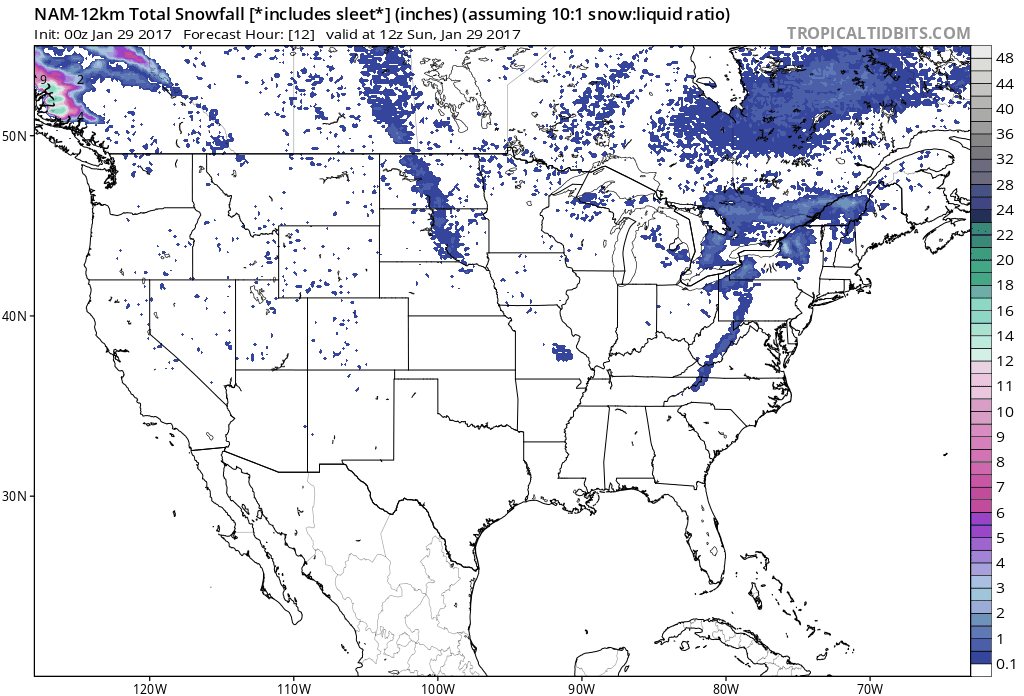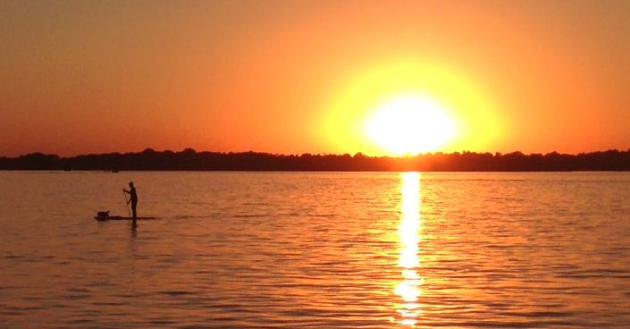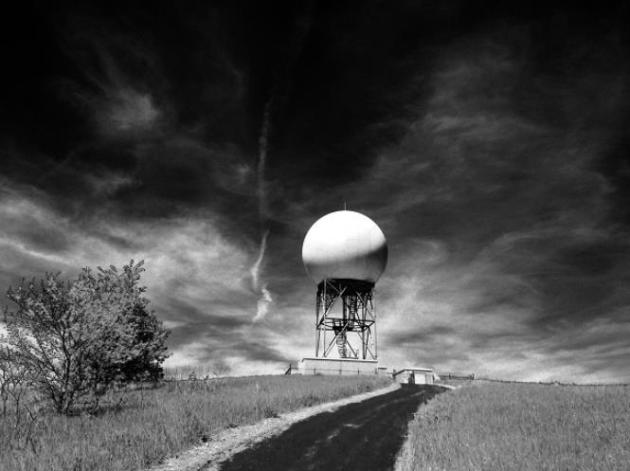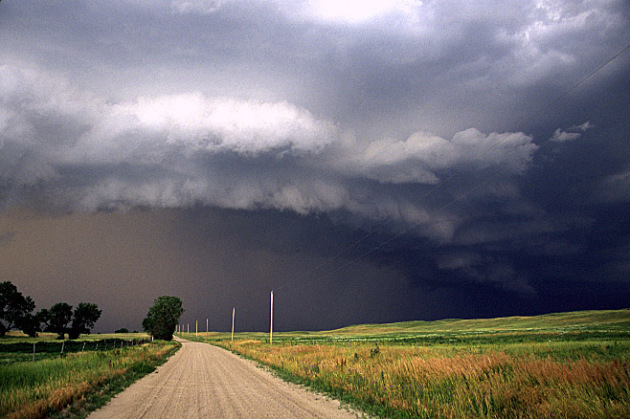1″ snow on the ground in the Twin Cities.
28 F. high temperature yesterday.
25 F. average high on January 28.
37 F. maximum temperature in the Twin Cities on January 28, 2016.
January 29, 1977: Due to the extreme cold, the St. Paul Winter Carnival is held indoors for the first time.
The Weather Is No Laughing Matter – Or Is It?
“Laughter is an instant vacation” said Milton Berle. I just read that the average child laughs an average of 300 times a day. Adults? Closer to 5 times a day. Then again life was simpler when you were 6. Of course there are times you don’t want to hear laughter: during surgery, on your honeymoon night – or sitting in front of your accountant.
Weather is the only thing we can predict into the future with any accuracy or predictability. A reliable forecast means you can prepare and optimize your schedule to take advantage of favorable conditions.
Fun fact: a third of the world’s economy is impacted by the weather. That’s $25 trillion of global economic output at the mercy of the elements.
I stand by my reckless prediction that the worst of winter, a winter that hasn’t been all THAT bad, is behind us now.
A clipper drops 2-4 inches of snow on Bemidji and Duluth tomorrow, then temperatures drop a few degrees below average by late week, but the sun will be out again. A cool-ish start to February, but no subzero serenades are on the horizon.
Worth a laugh? No – but a smile or chuckle? Heck yes.
January 2017: Another Warmer than Average Month for Minnesota. Here’s an excerpt of Mark Seeley’s Minnesota WeatherTalk: “…As we end the month of January early next week most of Minnesota’s climate observers are reporting mean monthly temperature values that are from 5 to 7 degrees F warmer than normal. For the Twin Cities January marks the 17th consecutive month with above normal temperatures, while on a statewide basis it is the 9th consecutive month of above normal temperatures. Extreme temperature values for the month ranged from -46°F at Cotton (St Louis County) on the 14th to a high of 48°F at several locations over the 18th and 19th. In terms of record-setting daily temperatures, 31 daily record maximum temperature records were tied or set over the warm period from the 17th to the 21st, while over the same period 90 daily warm minimum temperature records were tied or set…”

Almost Reasonable for Early February. Everything is relative, right? The 15-Day ECMWF numbers above don’t look so bad, considering we could easily be hip-deep in drifts with -30F wind chills right about now. We cool off the latter half of the week but temperatures next week run a few degrees above average. Source: WeatherBell.

California Drought Shrinks to Smallest Level in Years After Onslaught of Rain and Snow. Jason Samenow has details at Capital Weather Gang: “A year ago, exceptional drought — the most serious kind — covered 40 percent of California. As of Thursday, following weeks of heavy rain storms and massive dumps of mountain snow, exceptional drought has vacated the state. The intensity and coverage of California’s drought has shrunk dramatically since October when 80 percent of the state was declared a drought area by the U.S. government’s Drought Monitor. Now just about half the state has drought conditions — entirely focused in central and southern California. The Drought Monitor indicated that Northern California was drought-free two weeks ago...” (Map credit: U.S. Drought Monitor).
Albany Tornado Packed 150 MPH Winds, Traveled 71 Miles.Typical for Oklahoma, but south Georgia in January? I’m hearing rumblings that last weekend’s tornado tally may be as high as 70. Here’s an excerpt from Albany Herald: “Baker, Dougherty, Worth, Turner and Wilcox counties were slammed Jan. 22 by an EF3 tornado that packed 150 mph winds and traveled nearly 71 miles in a northeast direction, starting several miles north of Newton and ending up near Abbeville in Wilcox County, leaving a swath that was, in places, a mile and a quarter wide. Five deaths in Dougherty County have been attributed to the massive cyclone, along with at least 40 injuries. Damages to homes and businesses are in the millions of dollars, and thousands are still without electricity a week later. The preliminary results of the surveys by the National Weather Service — the numbers may be adjusted as more information comes in…”
Graphic: NOAA.

Tornadogenesis: The Missing Link? A paper submitted to the Bulletin of the American Meteorological Society focused on new parameters which may help supercells focus vorticity on the tornado itself; here’s an excerpt of the abstract: “…We find that tornadogenesis occurs in concert with processes not clearly seen in previous supercell simulations, including the consolidation of numerous vortices and vorticity patches along the storm’s forward-flank downdraft boundary and the intensification of a feature we call a streamwise vorticity current (SVC), a current of horizontal vorticity that is tilted upward into the storm’s low-level mesocyclone. The SVC is found throughout the genesis and much of the maintenance phase of the tornado, where it appears to help drive the storm’s vigorous low-level updraft. We compare stages of the storm’s maintenance phase to observations. We find that tornado decay occurs rapidly throughout the depth of the tornado and is associated with a weakening of the SVC and the development of a strong rainy downdraft that encircles the tornado, which has moved rearward into the storm’s cold pool…”
The Science Behind GOES-16’s Color Composite Imagery. NOAA NESDIS explains why GOES-16 creates a superior “true color” image: “…The composite color images from GOES-16, however, are created by combining data from the satellite’s 16-band Advanced Baseline Imager to produce a range of colors within visible part of the electromagnetic spectrum (think the colors of the rainbow, ROYGBIV). The end product is an image much closer to what a human eye would see from space. Yet, as mesmerizing as GOES-16’s color images are, the fact is that meteorologists don’t always want to view the Earth and its atmosphere this way. This explains why GOES-16 carries an imager with 16 spectral bands as opposed to a camera…”
Building to the Sky, with a Plan for Rising Waters. The New York Times reports on a growing trend: “…Along coastlines and lake shores and riverfronts across the country, tenants and homeowners, regulators and planners, private developers and public institutions are embracing the accumulating evidence of climate change and fortifying buildings and infrastructure against rising sea levels and ever more intense storms. To an extent that would have been unimaginable before Hurricane Katrina in 2005 and Hurricane Sandy in 2012, resilient design has entered the vocabulary of architects and engineers in parts of the country at risk of inundation…”
Photo credit: “The American Copper Buildings, just right of the Empire State Building, were designed so that tenants could live in their apartments for at least a week if the area floods.” Credit Todd Heisler/The New York Times.
San Francisco At Risk from Seawall Damage in a Major Earthquake. Details via Temblor.net: “The San Francisco Seawall was a key factor in turning San Francisco into the prosperous city it is today. Its construction, which took place from 1879-1916 allowed for tidal marshlands to be turned into the Embarcadero, and over 500 acres of downtown San Francisco. However, the Seawall is at risk from a serious threat, earthquakes. Last July, in a joint venture by GHD and GTC, two engineering consultants, a report on the Seawall’s earthquake vulnerability was prepared for the Port of San Francisco. In it, they highlighted the “greater than expected risk to the Seawall,” and strategies which could be taken to seismically retrofit it. This report, and more, was further highlighted at the 14th Annual Northern California Earthquake Hazards Workshop at NASA this last Tuesday and Wednesday…”
Map credit: “Earthquake probabilities for the Bay Area. The USGS estimates that there is a 72% chance that a M=6.7+ will strike the region by 2043. Such a quake poses significant threats to the San Francisco Seawall.” (Figure from 2016 USGS Fact Sheet on the “Earthquake Outlook for the San Francisco Bay Region 2014–2043”)
3 Republican Governors Embrace Clean Energy’s Economic Promise. Here’s an excerpt from EDF, Environmental Defense Fund: “Last week, the U.S. inaugurated a new president who has vowed to abandon the landmark Paris climate agreement and roll back bedrock American environmental protections.But turn to the states and you’ll find a different story, even in the red states that elected President Trump. In fact, Republican governors in the Midwest are prioritizing economic growth and job creation by accelerating investments in energy efficiency and renewable energy. In the few weeks after the election, leaders in Illinois, Ohio, and Michigan have adopted new policies that help tackle climate change and grow the clean energy economy...”
Trump Infrastructure Priority Plan Includes Transmission, Wind, Energy Storage. An “all of the above” strategy, including clean renewables? I’m keeping my fingers crossed. Here’s an excerpt from Utility Dive: “…Trump’s infrastructure wish list includes many provisions observers would expect — the document is heavy on the bridges and road projects he promised throughout the campaign would create jobs for Americans. Those in the utility industry who hoped that affinity for big infrastructure projects would translate into power sector programs may take heart in the document released by McClatchy on Tuesday. Just how the Trump administration plans to encourage the projects remains unclear, but it could give an indication of the White House’s priorities. Of the 50 infrastructure projects, seven focus on the electricity sector...”
Tentative Infrastructure Priority List is here.
Big Oil Roars Back. Texas Monthly has the story; here’s an excerpt: “…But as 2017 begins, the outlook is radically different. Prices seem to have stabilized (albeit at half their mid-2014 level), and Donald Trump has tapped two prominent Texans with deep energy-industry ties for his Cabinet. Pending their respective confirmations (which had not been completed when Texas Monthly went to press), ExxonMobil chairman and CEO Rex Tillerson will be our next secretary of state, and former governor Rick Perry will run the Department of Energy. And an almost-Texan—Oklahoma attorney general Scott Pruitt—has been nominated as administrator of the Environmental Protection Agency, where he would likely pursue a pro-oil agenda. After eight years of the cold shoulder, fossil fuels are back in vogue in Washington. “It’s a complete U-turn from the previous administration,” says Craig Pirrong, the director of the University of Houston’s Global Energy Management Institute...”
Illustration credit: Jonathan Bartlett.

Power of a Meaningful Life. Chase meaning rather than happiness, and you may wind up being happier (and more content) in the process, argues the author of a new study at Scientific American: “…I don’t think there’s anything wrong with feeling happy, but I think that setting happiness as your goal and relentlessly chasing it can lead to problems. Research shows that being fixated on happiness can actually make people feel lonely and unhappy—and that the happy life is associated with being a “taker,” to use the language of Wharton’s Adam Grant. But it’s different with meaning. Leading a meaningful life leads to a deeper sense of contentment and peace, and it’s linked to being a “giver” rather than a “taker.” The happiness frenzy distracts people from what really matters, which is leading a meaningful life…”
Boeing’s New Spacesuit May Look Stylish, But It’s All Business. Interesting details at WIRED: “…The Boeing Blue is designed for intra-vehicular activity, meaning it’s meant for wearing inside the spacecraft. It offers a measure of protection in the event of a serious problem like sudden depressurization or a fire. Unlike a suit designed for extra-vehicular activity, it can’t shield astronauts from micro meteoroids or keep them from being baked like a potato by solar radiation. They’ll wear it primarily during launches and re-entries, when they face the greatest risk of something going wrong. “The nickname for it in the Apollo era was the ‘get me down quick suit,’ says Nicholas de Monchaux, who wrote Spacesuit: Fashioning Apollo, a book about spacesuit design…”
Photo credit: “Boeing’s new spacesuit will be worn on missions to the International Space Station beginning in 2018.” Boeing.
TODAY: Clouds, few flakes. Winds: NW 10-20. High: 28
SUNDAY NIGHT: Clouds linger. Low: 19
MONDAY: Milder with flurries, accumulating snow far north. Winds: SW 10-15. High: 38
TUESDAY: Coating of flurries? Colder wind kicks in. Winds: NW 15-25. Wake-up: 29. High: 33
WEDNESDAY: More clouds than sun, brisk. Winds: NW 10-15. Wake-up: 20. High: 26
THURSDAY: Chilly, but the sun should be out. Winds: NW 7-12. Wake-up: 10. High: 21
FRIDAY: Brisk blue sky, light winds. Winds: N 3-8. Wake-up: 7. High: 19
SATURDAY: Light snow or flurries, coating? Winds: W 8-13. Wake-up: 8. High: 23
Climate Stories…
Miami Beach to Begin New $100 Million Flood Prevention Project In The Face of Sea Level Rise. The Miami Herald has the story: “With Miami Beach set to break ground this year on the most ambitious piece yet of its aggressive anti-flooding project, some homeowners are worried that raising streets to keep them dry will cause flooding on their properties. The city will embark on a $100 million project to raise roads, install pumps and water mains and redo sewer connections during the next two years across a swath of single-family homes in the La Gorce and Lakeview neighborhoods of Mid-Beach. A sizable chunk of a citywide effort estimated to cost $400 to $500 million, the work is meant to keep streets dry in the face of sea level rise…”
Photo credit: “Cars wade through the king tide water on North Bay Road in 2015.” Walter Michot.
Crazy Times in the Arctic. Mark Serreze, Director of the National Snow and Ice Data Center in Boulder, CO has a post at EARTH Magazine: “…One could argue that these events are just expressions of natural variability in Arctic climate superimposed upon the overall pattern of warming and sea-ice loss. But changes in extreme weather and climatic events in recent years have been well documented around the world. Heat waves have tended to be hotter, and a warmer atmosphere can hold more water vapor, raising prospects for excessive precipitation. Random extreme events have always been a part of the climate system, but by loading the atmosphere with greenhouse gases, we’ve also loaded the dice. Are the recent events in the Arctic examples of what we’ll be seeing more of in the near future? Time will tell. But after studying the Arctic and its climate for three and a half decades, I have concluded that what has happened over the last year goes beyond even the extreme.”
Graphic credit: ” Measurementsof sea-ice extent are collected daily. The gray curve in this time series indicates the average sea-ice extent for October through February from 1981 to 2010, with the two-standard-deviation uncertainty represented by the shaded area. The blue curve indicates measures for the current season through Jan. 10, while the dashed green curve representing 2011-2012 is shown for comparison.” Credit: NSIDC.

Essay: Meteorologists and the Sacred Position Betweeen People and Science. The threats are short term and long term. We ignore scientists at our own peril. Here’s an excerpt from The Daily Home: “…Serious scientists and public health leaders, and Pentagon leaders, are gravely concerned about climate change. We fear that the violent storms, floods, droughts, sea level rise and loss of agriculture associated with climate change will cause migrations hundreds of times larger than the displacement from Syria. An important aspect of this is that I really want to acknowledge and to thank meteorologists for very important work and outreach informing the public about weather threats. I would assert that both physicians and meteorologists are in a daunting and sacred position between people and the world of science. In meteorology the systemic disorder is climate heating as a result of climate forcing gases. I worry deeply about the future of my country, about environment and health, about our economy and about our security threats. Some will likely say that it is not meteorologists’ job to report on longer-term and global threats, such as climate. In response here’s a medical story…”

Rain from Thunderstorms is Rising Due To Climate Change. Something I’ve been witnessing for the better part of 15 years, and I’m hardly the only meteorologist tracking these trends. Scientific American has the story: “Across a vast swath of Europe and Asia, rain is increasingly falling in the short, localized bursts associated with thunderstorms, seemingly at the expense of events where a steady rain falls over many hours, a new study finds. The study, detailed Wednesday in the journal Science Advances, directly links this trend to the warming and moistening of the atmosphere caused by rising greenhouse gas levels. The results fit with rainfall trends already observed in the U.S., as well as model predictions that massive rains associated with thunderstorms could become both more frequent and more intense in the U.S. as the world continues to heat up. The shift toward more extreme rains could have implications for water management and flooding because the ground is less able to absorb rainwater when it falls all at once...”
As Climate Change Accelerates, Floating Cities Look Like Less of a Pipe Dream. Here’s an excerpt from The New York Times: “You might call it a Noah’s Ark for an era of melting polar ice sheets. An audacious plan to respond to climate change by building a city of floating islands in the South Pacific is moving forward, with the government of French Polynesia agreeing to consider hosting the islands in a tropical lagoon. The project is being put forward by a California nonprofit, the Seasteading Institute, which has raised about $2.5 million from more than 1,000 interested donors. Randolph Hencken, the group’s executive director, said work on the project could start in French Polynesia as early as next year, pending the results of some environmental and economic feasibility studies...”
Image credit: “A rendering of the artificial floating island project in French Polynesia. The project is being put forward by a California nonprofit, the Seasteading Institute, which has raised about $2.5 million from more than 1,000 interested donors.” Credit Seasteading Institute
Trump’s Move to Clamp Down on Communications Spurs Backlash. The Wall Street Journal reports: “…An Environmental Protection Agency spokesman denied media reports from earlier this week that Mr. Trump’s administration was going to imminently delete the EPA’s website on climate change. Meanwhile, incoming Trump officials at agencies including the Interior Department, Agriculture Department and the EPA have demanded a cessation of certain public communication, prompting outcries from some congressional Democrats and progressive interest groups. With nearly seven days under Mr. Trump’s belt as president, many experts say the new administration’s moves aren’t that different from past transitions of power. What has changed, some say, is a rapid-fire social-media scene and a new president facing opposition not seen in decades…”

